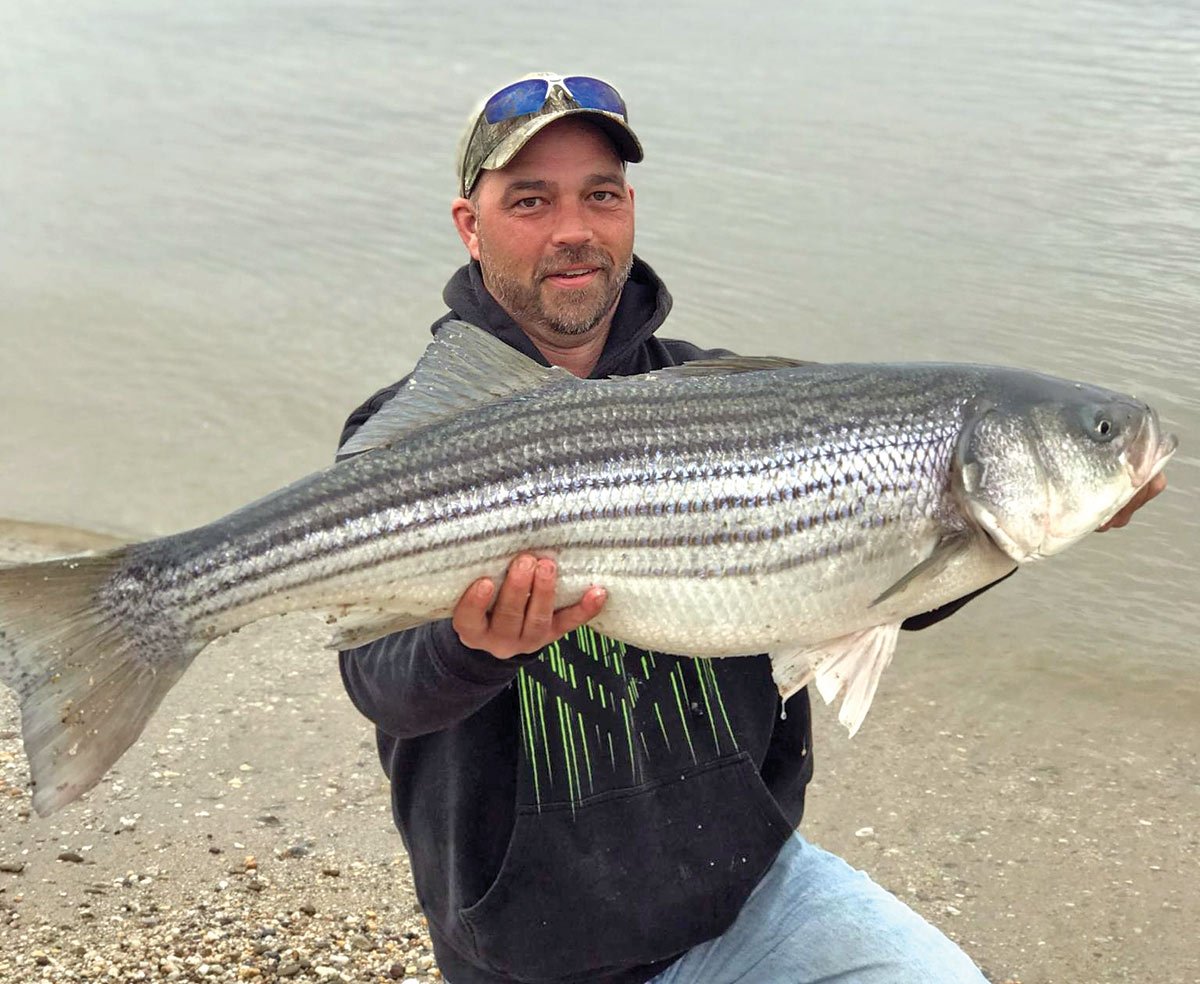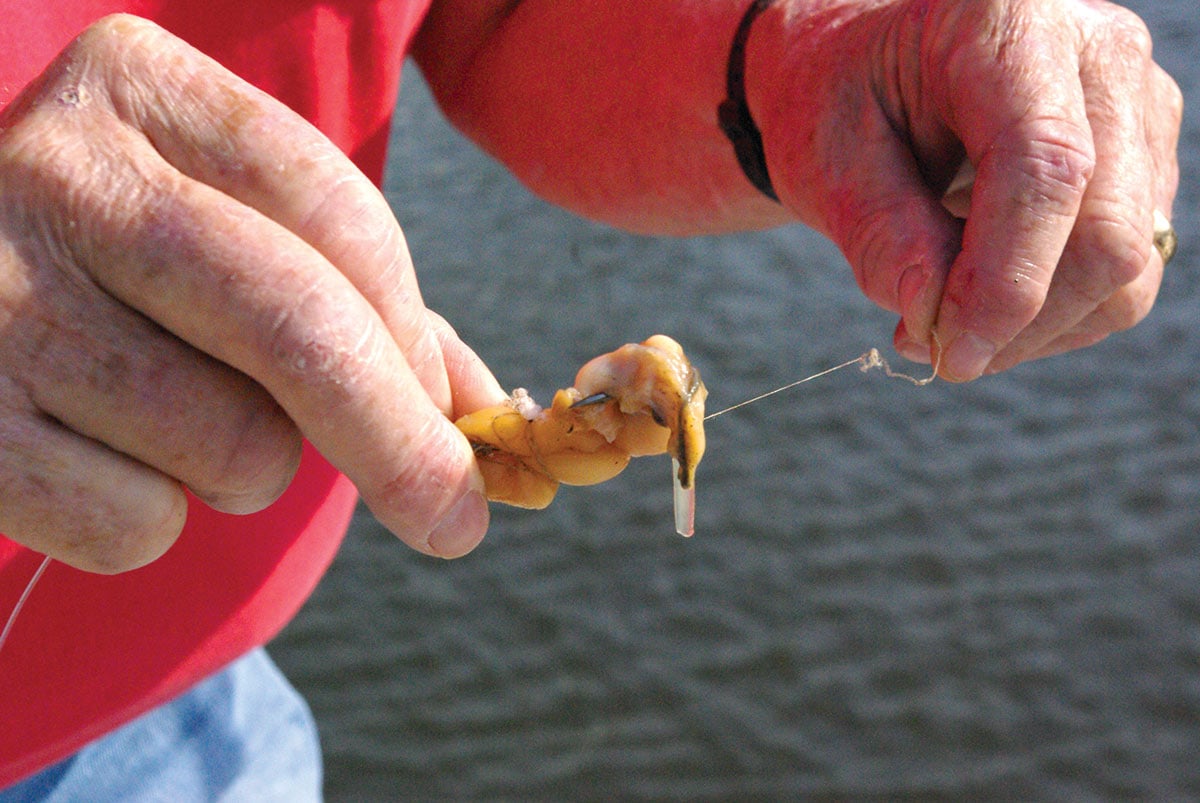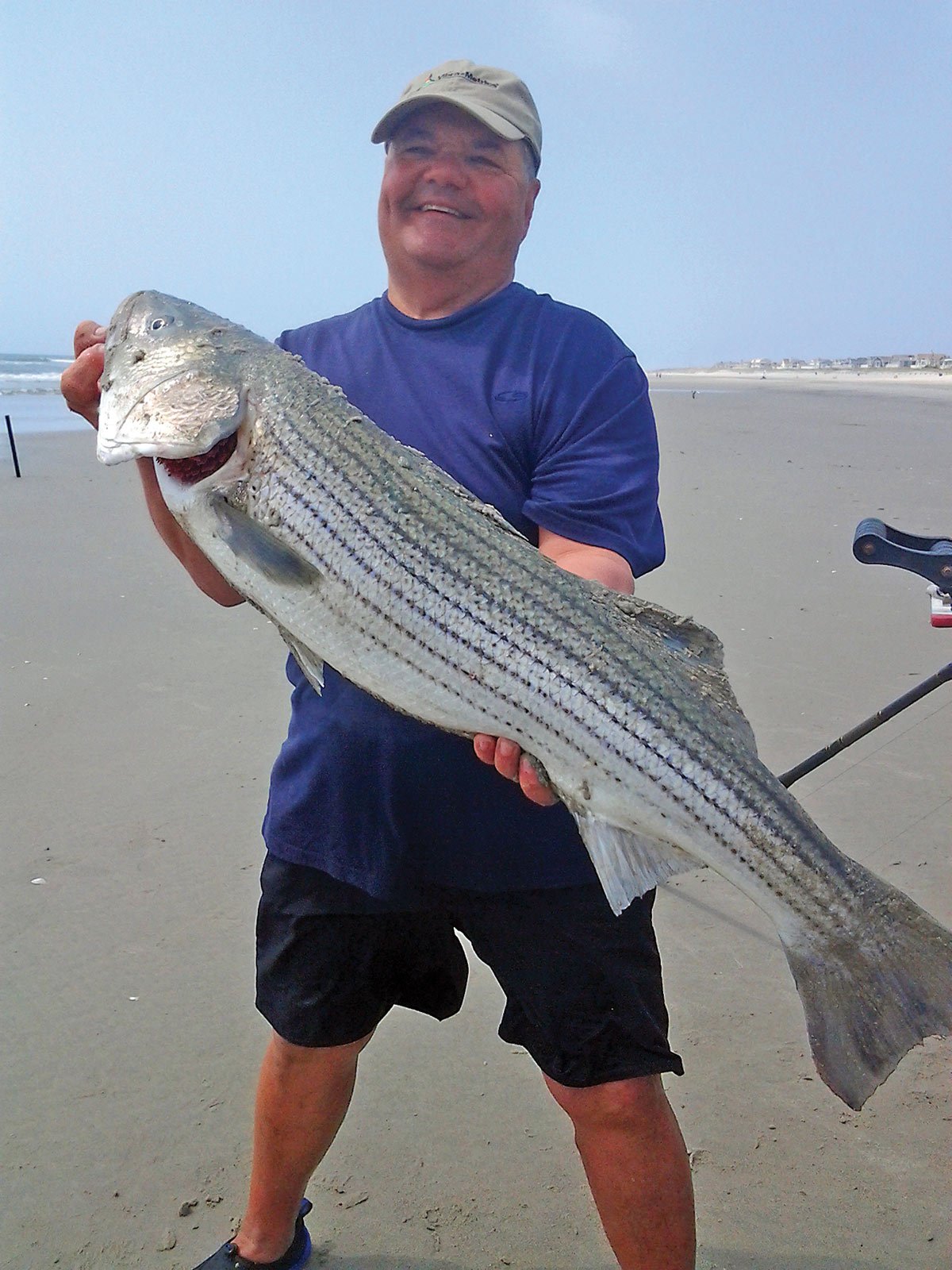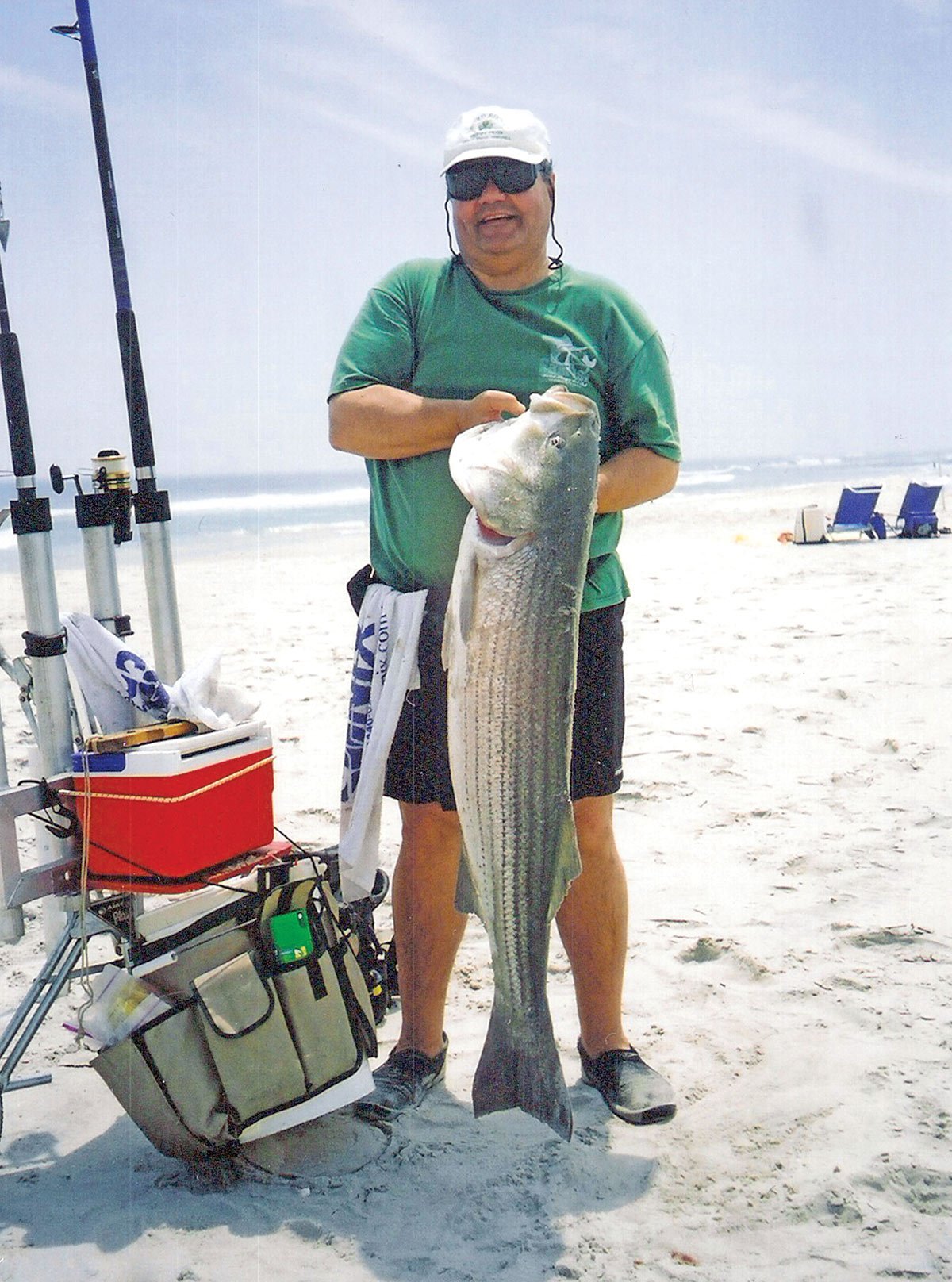
“Fishing the southern shores has a distinct advantage because you get the first shot at the stripers as they make their run north.”
The Ocean, Atlantic and Cape May county surf line often provides a variety of conditions with sloughs, sandbars and deeper water pockets within relatively easy casting distance; I also believe they’re some of the very best beaches for surfcasting in the state.

Bait is plentiful and accessible to throw a casting net when the mullet and other baitfish are around. Many beaches still also have jetties or groins to fish from or alongside. These surf conditions make it ideal for all types of fishing throughout the year, but the most exciting time for striper fishing is late spring, May and into June. This is the start of the striper run north as they depart from the Delaware River and back bays where they spawn in early spring.
Fishing the southern shores has a distinct advantage because you get the first shot at the stripers as they make their run north. The timing of the run is hard to predict since it is dependent on weather, water temperatures (optimally 55 to 68 degrees), and the presence of bait.
Fishing the May through June stretch provides a good opportunity during the spring striper run along the beach, though it may only last a few weeks. It may be the very best time to fish and land a nice size striper, as I’ve found the spring run to be more predictable than the fall in recent years, and well worth taking advantage of during this two-month period.
Put in the time and you will be rewarded. New Jersey’s Southern County beaches are the place to fish.
Scouting Locations
During the winter months, the Jersey Shore is usually hit with a few nor’easters and coastal storms that churn up the surf and change the beach/shore line conditions. If you fished a slough area last year it might not be there this year depending how bad a beating the surf took over the winter. It is advisable to scout out your fishing spots at dead low tide to get an idea of the existing surf conditions.

You may also find other areas that developed sloughs or troughs that weren’t there before. Some areas may be shallow enough to walk out to a sandbar and fish deeper water at low tide. These sloughs will hold baitfish and are great to fish the incoming tide. Other areas worth scouting of course are those beaches that underwent beach replenishment in the off season. It can have a big effect on past fishing spots for a few years until Mother Nature reclaims it.
My go to rig for surf striper fishing is a hi-low rig with Gamakatsu octopus circle size 9/0 hook with 50-pound mono leader. The dropper loop for the hook should not be longer than 2 inches. Circle hooks are the best hook selection due to striper size limits. It will safely hook the fish in the jaw area enabling a humane release of under size fish. Best of all, the stripers hook themselves.
The spinning reel I prefer in the surf is a baitrunner, which has a secondary drag. When the striper hits and runs the secondary drag is engaged; just turn the handle to engage the primary drag, then it’s game on. The spinning reel is strung with 50-pound braid. Just remember that braid is not indestructible; it will fray near your connections after several days of surf fishing due to it rubbing on the sand surface, so be sure to check your line and if necessary cut off several yards to eliminate the line breaking while fighting a fish.
Surf rod selection is important regarding how you plan to rig up. The type of action, the line weight and the lure/rig/sinker weight needs to be considered. Since I use a hi/lo-rig the weight tends to be on the heavy side so a medium heavy 12-footer meets my needs. I can get some nice distance casting with this reel/rod combination. As for the types of sinkers that I find effective, the pyramid style when the surf is calm and sputnik type in rougher surf. I’m using the minimum weight needed to hold bottom, increasing the size when the current causes the line to drift.
Typically in late spring fresh clam is attractive to stripers; however when the bunker are around or hit the surf, bunker chunks are a great bait. I usually fish two rods and put the clam on the hi-hook and a bunker chunk on the lo-hook, reversing the setup on the second surf outfit. I use elastic string to tie down the clam; if the whole clam is small, use the entire clam, guts and all. With larger clams I cut them in half including the guts and hook up the cut half. “Big bait, big fish” holds true for those hungry stripers. Just check your baits regularly, at least every 20 minutes or so in case smaller fish are picking you clean.
Biding Your Tides

Fishing late spring and predicting the striper run is not easy. You look to fishing reports to give you some sense of who is catching what and when and what bait/lure. One thing is for sure, you’re not catching anything until you hit the surf and set a line. Typically I like to fish the incoming tide from an hour after dead low up to and about 2-1/2 hours after full high tide, though I have caught many stripers on all phases. One 45-inch striper of mine was caught an hour-and-a-half after full high tide, yet on the day prior nothing was biting. You never know unless you put in the time. On some trips I catch a whole bunch of shorts on the incoming tide, the next it’s a few and then another it’s no bites at all.
If your time is limited, I find it’s best to fish the incoming through full tide, which is usually prime time to fish (not only for stripers but other fish as well). Regardless of precise tide, the more days you can put in fishing the better your chances of scoring.
Remember that late spring striper fishing can be unpredictable. You can increase the odds in your favor by doing your homework. Read the local fishing reports (take some of those with a grain of salt) and watch the weather conditions, especially the wind and wind direction. In addition to your seasonal scouting of locations, know the tide schedule for that area you plan to fish. Put together, this is all valuable information that will help increase your chances of landing a nice one.
We are fortunate to have such great beaches along the southern New Jersey coast and fishing for stripers in late spring can be a lot of fun and rewarding. There will be days when nothing is biting even on a nice sunny day with calm seas or you are catching those dreaded dogfish one after another. Just hang in there and don’t get frustrated. I have had a few of those days; but my persistence is often rewarded with a nice striper. Not every day will be great but most will, just enjoy the time spent on the beach.



